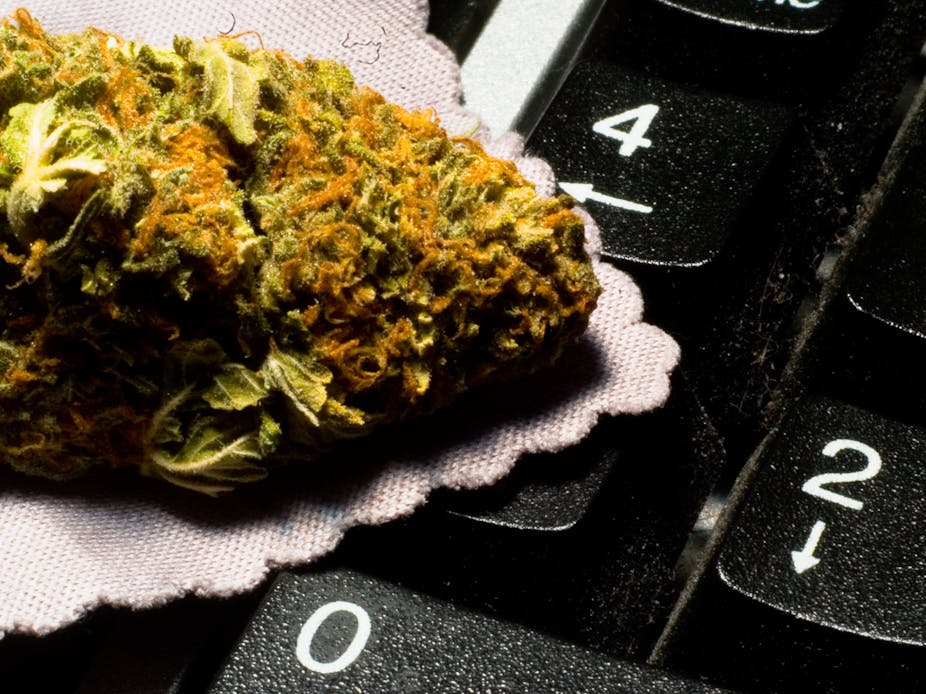A bill to permit medical cannabis use in Australia is set for debate in Senate. If medical cannabis use is legalised, doctors could become gatekeepers between patients and a controversial drug.
Lessons from Canada – one of the first countries in the world to allow medical cannabis – can help Australian doctors prepare for treating people who want to use cannabis.
The Canadian system
In 2001, the federal Canadian health department set up a medical cannabis access program. The move was a result of court challenges by people who wanted to use cannabis to help manage their medical conditions.
Until recently, people applied individually to the Canadian health department for permission to use cannabis medicinally. Applicants needed a doctor’s declaration saying their medical condition met federal eligibility rules.
Under new rules in effect since April 2014, patients need a prescription-like “medical document” from a doctor or nurse practitioner specifying a daily cannabis dose. With this document, they can legally buy dried cannabis from a government-licensed producer.
The Canadian health department no longer processes applications. Nor does it specify medical conditions that qualify for cannabis use.
But even though the law allows doctors to authorise cannabis use, the health department has not approved it as a regulated medicine. It says more evidence is needed to show the drug’s safety and efficacy for medical purposes. Medical professional bodies in Canada agree.
The College of Family Physicians of Canada, for instance, worries doctors are “in an unfair, untenable and to a certain extent unethical position” of judging whether to authorise cannabis use. Medical profession regulators (Colleges of Physicians and Surgeons) in all ten Canadian provinces have developed policies for doctors considering medical cannabis use for their patients.
What the policies say
Some doctors in Australia will have similar concerns about appropriate medical use of cannabis. Four key points from Canadian policies can help guide Australian health-care practitioners.
First, doctors should prescribe cannabis only if conventional treatments don’t work. Most Canadian medical colleges say there’s not enough high-quality evidence to support medical cannabis use.
They require doctors to try conventional treatments first, including approved drugs that contain the chemical compounds found in cannabis (cannabinoids). If conventional therapies fail, doctors and their patients may consider cannabis.

Second, doctors must talk to their patients about the special risks of cannabis use, and keep good records of these conversations. These records provide evidence that the doctor met their legal and ethical duties to explain the possible harms and benefits of using the drug. This is especially important because cannabis is not a regulated drug with accepted medical uses.
College policies specify matters doctors should attend to with their patients. This includes screening them for addiction risk and warning them about the hazards of cannabis impairment. A doctor should also instruct patients not to give the drug to other people, and explain their legal duty to report patients who use cannabis to a regulatory authority if they have a safety-sensitive job.
In some provinces, patients must sign an agreement about responsible medical use of cannabis. And doctors may refuse to prescribe cannabis again if the patient breaches the agreement.
Third, efforts need to be made to prevent “doctor shopping”, when patients visit multiple doctors to get prescriptions. Most College policies say a patient can only get a medical document for cannabis use from their primary treating doctor.
In some provinces, doctors are required to keep a log of all patients using cannabis and report this information to their medical regulator. This is similar to government monitoring programs for prescription narcotics, such as the highly addictive painkiller oxycodone.
Finally, doctors must avoid conflicts of interest. Some College policies say doctors cannot become licensed cannabis producers or have a financial stake in a business that produces and sells cannabis. Federal regulations allow doctors to receive cannabis from a licensed producer for their patients, but some policies say doctors should not take on this dispensing role.
Lessons for Australia
As lawmakers get set to debate cannabis, they should consider three key issues concerning medical use of the drug.
First, doctors shouldn’t be asked to prescribe cannabis in the absence of guidelines for accepted therapeutic uses and doses. Instead, they can certify a patient meets eligibility requirements for medical cannabis use. And governments can consult with medical experts to develop such rules.
Second, whatever approach is used to allow people to access cannabis, doctors need handy and up-to-date resources to inform discussions with patients. The Canadian health department publishes a cannabis information document for professionals, but it’s a 150-page report of research studies, not a practice guideline.
Finally, if medical use of cannabis is legalised, information on patient outcomes should be tracked to learn more about the drug’s safety and effectiveness. Governments should provide funds to support this work.
The Canadian province of Québec provides a good example of supporting research into medical cannabis. Québec doctors may only authorise cannabis as an experimental therapy and the medical regulator is cooperating with the Canadian Consortium for the Investigation of Cannabinoids in a province-wide study of around 3,000 people using cannabis for medical purposes.
Australian lawmakers must make ensure a system for medical cannabis use works for patients and their doctors. Legalised programs may be underused if doctors do not support them, and patients will be left to continue risking illegal use.

